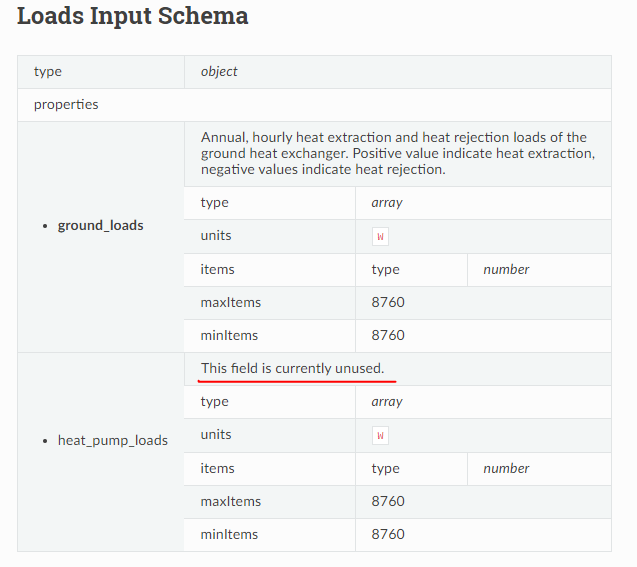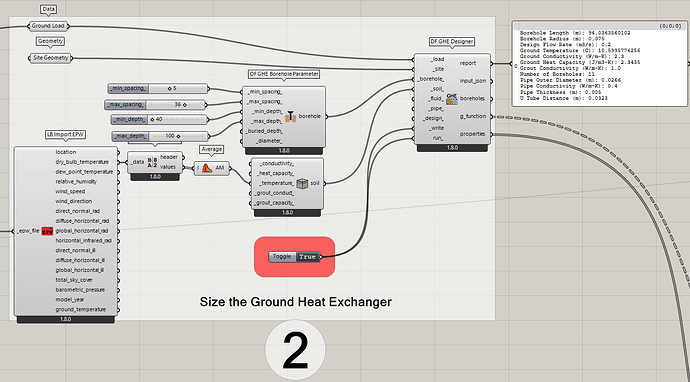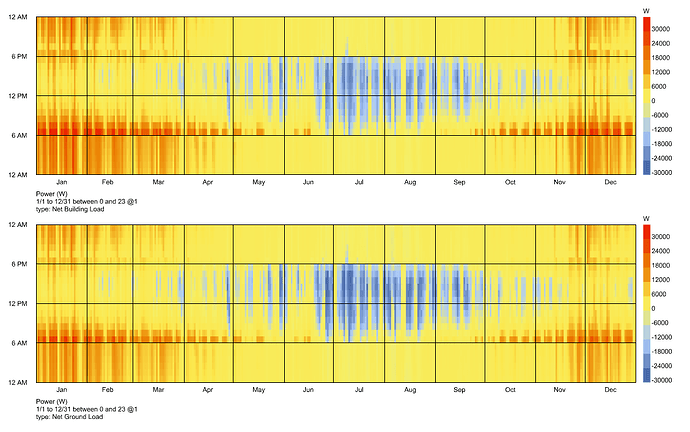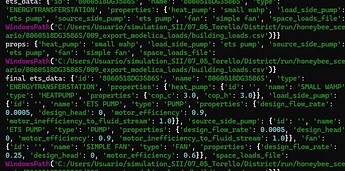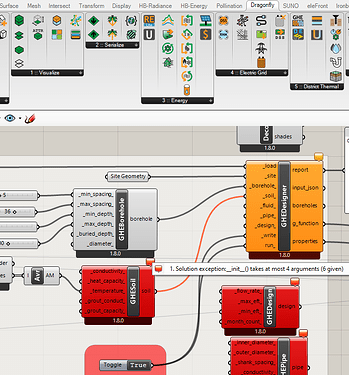Hi @Batiste ,
This is a very good question and, while I’m sorry that I didn’t answer it sooner, my knowledge about this topic is a lot better than it was 2 weeks ago. So I can give you a better answer now, though I might still need Matt Mitchel’s help to answer it fully (he is the author and maintainer of the ThermalNetwork package).
First, I can say that the way that the ThermalNetwork package auto-sizes the GHE is with the GHEDesigner Python package, which has pretty good documentation, which you can find here:
https://ghedesigner.readthedocs.io/en/latest/
Under the “Loads Schema” section of the docs, I can see that Matt put a placeholder for the loads from the heat pumps but this field is currently unused:
So I would assume that one has to do some manual work to process the building loads into ground loads, which would involve adding/subtracting out the heat pump loads. I don’t see “cooling efficiency of 3.5” or “heating efficiency of 2.5” in the system_params.json schema that we are passing to URBANopt CLI (let me know if I am missing something).
I know that Matt has referred to this whole workflow as WIP and he recently got a good chunk of funding to refactor and update the GHEDesigner package starting in September of this year. I’m hopeful that he’ll add full support for heat pump loads with this funding.
All of this means that it’s very possible that all of the heat pump’s affect on the ground sizing is ignored at the moment and is just slated for “future work” until September.
I’m going to reach out to Matt for clarification but one way that you can test this for yourself is with a new component that I just added to Dragonfly, which interacts directly with GHEDesigner to size a GHE given site geometry and a timeseries data collection of ground loads. I just added a dragonfly sample for this here, which takes the G-function from the GHE sizing and uses it in an Ironbug simulation of a single building with WSHPs. You can see the GHE sizing calculation in the middle of the sample file:
In that file, you will also see a section where I take the building thermal loads from an initial E+ simulation and I try to convert them into ground loads to be used in the GHE sizing simulation (accounting for heat pump COPs):
So you could do a comparison between the GHE sizing information that you get from URBANopt vs. the sizing info you get by directly interacting with GEHDesigner using building loads that you’ve edited to account for HP COPs. If the results are significantly different, then it is possible that the URBANopt workflow does not yet account for HP COPs and you might have to do some manual editing to account for the COPs in the workflow.
